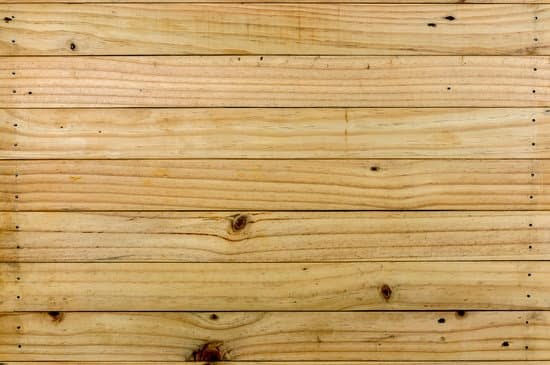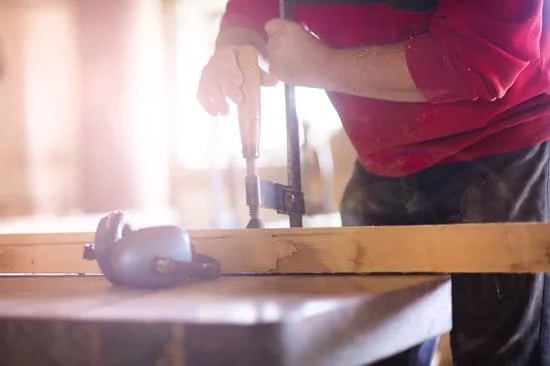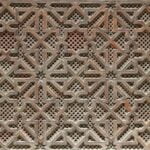What is a holdfast in woodworking? Holdfasts are an essential tool used in woodworking that provides a quick and efficient way to secure workpieces to a bench top. They play a crucial role in the craft by allowing woodworkers to work with stability and precision. In this article, we will explore the concept of holdfasts, their history, anatomy, types, proper usage, benefits, DIY options, troubleshooting, and more.
Understanding the history of holdfasts is crucial in appreciating their significance in woodworking. Delving into their origins and evolution provides valuable insights into how they have become an indispensable part of the woodworking process. From traditional to modern applications, the history of holdfasts offers a comprehensive perspective on their development over time.
As we break down the different parts and components of holdfasts and how they function, it becomes evident that each element serves a specific purpose. The anatomy of a holdfast is fundamental knowledge for woodworkers as it informs them about the mechanics behind its operation. Understanding how holdfasts work helps craftsmen utilize them effectively in various projects and applications.
History of Holdfasts
Holdfasts have a long and rich history in the world of woodworking, dating back to ancient civilizations where they were used to secure wood for various carpentry tasks. Understanding the origins and evolution of holdfasts provides valuable insight into their significance in the craft of woodworking. The history of holdfasts is a testament to their enduring utility and effectiveness in shaping wood for functional and artistic purposes.
The concept of holdfasts can be traced back to early woodworking practices, where craftsmen relied on simple yet ingenious methods to secure their workpieces. These early iterations of holdfasts were often basic in design, consisting of a single metal or wooden rod that could be driven into a workbench to hold the wood firmly in place.
Over time, advancements in metalworking and engineering led to the development of more sophisticated and versatile holdfast designs, allowing craftsmen to tackle a broader range of woodworking projects with greater precision and efficiency.
Historically, holdfasts played a crucial role in traditional woodworking disciplines such as shipbuilding, furniture making, and architectural joinery. Their ability to securely anchor workpieces to a work surface enabled woodworkers to carve, shape, and assemble intricate components with confidence and accuracy. As woodworking techniques evolved over the centuries, so too did the design and functionality of holdfasts, leading to the creation of specialized variants tailored to specific applications within the craft.
- Holdfasts have been an integral part of woodworking for centuries
- Early iterations were basic in design
- Advancements in metalworking led to more sophisticated designs
Overall, understanding the history and evolution of holdfasts sheds light on their enduring relevance and value in contemporary woodworking practices. By appreciating the journey from humble beginnings to modern adaptations, woodworkers can gain a deeper appreciation for the indispensable role that holdfasts play in shaping raw timber into exquisite creations.
Anatomy of a Holdfast
In woodworking, a holdfast is a simple yet essential tool that helps secure workpieces to a workbench. But what exactly is a holdfast in woodworking? Understanding the anatomy of a holdfast is crucial for grasping its function and utility in woodworking projects.
The basic components of a holdfast include the shank, pad, and shaft. The shank is the vertical part of the holdfast that gets driven into the workbench through a hole. It features a slight curve or bend near the bottom, which aids in securing the holdfast to the bench.
The pad, located at the top of the shank, is where pressure is applied to hold down the workpiece. The shaft connects the shank and pad, serving as an intermediary between these two key parts.
More specifically, when using a holdfast, woodworkers place their workpiece on the desired location on their workbench surface and identify where they want to secure it. Then, they drill an appropriately-sized hole through which they insert the shank of the holdfast and tap it until it protrudes slightly from beneath.
By striking down on top of the pad with a mallet or hammer, woodworkers can create tension between the bottom of the shank inside the hole and force it outward against everything else on their workbench to keep it in place.
Understanding how each part functions within a holdfast allows woodworkers to utilize this tool effectively and maximize its benefits in various woodworking projects. Whether working on delicate joinery or heavy-duty construction, knowing how to use a holdfast properly can make all the difference in achieving precision and stability in woodworking endeavors.
| Component | Description |
|---|---|
| Shank | The vertical part of the holdfast driven into a workbench through a hole. |
| Pad | The top part of the holdfast where pressure is applied to secure the workpiece. |
| Shaft | The intermediary piece that connects both the shank and pad. |
Types of Holdfasts
Holdfasts are indispensable tools in the realm of woodworking, providing a secure and reliable method for holding workpieces in place during various tasks. They come in a variety of designs and styles, each with its own unique features and advantages. Understanding the different types of holdfasts can help woodworkers choose the right tool for their specific projects and achieve optimal results.
One popular type of holdfast is the straight-shank holdfast, characterized by its simple and versatile design. This type typically consists of a straight iron shaft with a flattened end that serves as the contact point with the workbench. The straight-shank holdfast is ideal for securing workpieces on traditional wooden workbenches, providing a strong grip without damaging the surface.
Another common variation is the cranked or offset holdfast, which features a bent shaft that allows for greater flexibility in positioning and clamping workpieces at different angles. The offset design enables woodworkers to reach over obstacles or clamp materials in hard-to-reach areas, making it a valuable tool for intricate woodworking tasks.
Additionally, there are specialized holdfasts such as round bench dogs and tapered square bench dogs that cater to specific needs in woodworking projects. These variations offer alternative methods for securing workpieces on the workbench, adding versatility and convenience to the woodworker’s toolkit.
Understanding the differences between these types of holdfasts empowers woodworkers to select the most suitable tool for their specific project requirements. By leveraging the unique features and benefits of each type, craftsmen can enhance their precision, efficiency, and overall woodworking experience.
How to Use a Holdfast
A holdfast is an essential tool in woodworking that helps to secure pieces of wood in place while they are being worked on. It consists of a shaft that is attached to a workbench with one end being shaped in the form of a hook or a bent arm, and the other end having a flat surface that makes contact with the workpiece. Understanding how to use holdfasts properly is crucial for achieving accurate and precise results in woodworking projects.
Here is a step-by-step guide on how to use a holdfast effectively in woodworking:
1. Positioning the Holdfast: Place the workpiece on the workbench in the desired location, and then position the holdfast over the piece where you want it to be held securely.
2. Applying Pressure: Once the holdfast is positioned correctly, apply downward pressure on the flat end of the shaft to engage it with the workpiece. This will cause the curved or hooked end of the shaft to anchor firmly into the workbench, holding the workpiece securely in place.
3. Releasing the Holdfast: To release or reposition the holdfast, simply strike lightly on top of the shaft with a mallet or hammer to disengage it from both ends before lifting it off from either side.
Using holdfasts can greatly improve efficiency and accuracy when working on woodworking projects, as they provide a reliable way to secure pieces of wood without requiring clamps or vises. Mastering this technique can significantly enhance your woodworking experience and results.
By using this simple yet effective tool, woodworkers can achieve precise and stable results, making their projects more uniform and professional-looking overall.
Benefits of Using Holdfasts
Incorporating holdfasts in woodworking projects comes with a multitude of benefits and practical applications. These simple yet effective tools provide stability, security, and efficiency when working on various woodcraft projects. From holding workpieces firmly in place to providing support while drilling, carving, or sanding, holdfasts offer a range of advantages that make them indispensable in the workshop.
Enhanced Stability and Security
One of the primary benefits of using holdfasts in woodworking is the enhanced stability and security they provide. By firmly securing a workpiece to the workbench or work surface, holdfasts prevent unwanted movement or slippage during intricate tasks such as hand planing, sawing, or chiseling. This ensures precision and accuracy in craftsmanship while minimizing the risk of accidents or errors due to unstable workpieces.
Increased Efficiency
Another advantage of incorporating holdfasts in woodworking is the increased efficiency they offer. Holdfasts allow woodworkers to secure multiple workpieces simultaneously without the need for clamps or vises, thereby streamlining workflow and saving time. Additionally, their quick-release mechanism enables swift repositioning of workpieces as needed, enhancing productivity and overall efficiency in woodworking projects.
Versatile Practical Applications
Holdfasts are versatile tools with practical applications across various woodworking techniques and projects. Whether used for hand tool operations like joinery and shaping, or for holding workpieces during machine-based processes such as routing or sanding, holdfasts serve as reliable aids in a wide range of woodworking applications. Their adaptability to different workpiece shapes and sizes further extends their utility, making them an invaluable asset in any woodshop.
Integrating holdfasts into woodworking practices not only ensures greater stability and security but also promotes efficiency and versatility in crafting high-quality woodwork pieces. Understanding these benefits illuminates the significance of incorporating holdfasts into woodworking processes for both seasoned artisans and aspiring enthusiasts alike.
DIY Holdfasts
For woodworking enthusiasts who are looking to customize their tools and equipment, making their own holdfasts can be a rewarding and practical endeavor. DIY holdfasts offer the flexibility to tailor the design and dimensions to suit specific project needs, as well as the opportunity to experiment with different materials for construction.
Tools Needed
To embark on the journey of creating DIY holdfasts, several basic tools will be essential for the process. These may include a forge or metalworking equipment for shaping and bending the metal, along with a drill press for creating holes in the holdfast for securing it to the workbench. Additionally, tools such as hammers, pliers, files, and measuring instruments will be instrumental in crafting a functional and durable holdfast.
Materials Required
The choice of material for crafting DIY holdfasts can significantly impact their strength and performance. Common options include steel rods or bars that can withstand the pressure exerted during woodworking tasks. Different types of hardwood can also be utilized for crafting wooden holdfasts. It is crucial to select materials that are sturdy and resilient enough to endure the rigors of use in a workshop setting.
Guided Instructions
Various online resources and woodworking guides provide step-by-step instructions on how to make DIY holdfasts. These instructions typically outline the process of shaping and bending metal rods or forging them into shape using heat and specialized equipment. For wooden holdfasts, detailed measurements and techniques for carving or shaping wood are often included in these instructional resources.
By engaging in the process of creating DIY holdfasts, woodworkers can gain a deeper understanding of the principles behind this essential tool while customizing it to fit their individual preferences and requirements.
Troubleshooting Holdfasts
When using holdfasts in woodworking, it is essential to be aware of the common issues and challenges that may arise during the process. Understanding how to troubleshoot these problems effectively can help ensure a smooth and successful woodworking experience. Whether you are a seasoned woodworker or just starting out, knowing how to address these issues can make a significant difference in the quality of your work.
One common issue that woodworkers encounter when using holdfasts is slippage. This occurs when the holdfast fails to grip the workpiece securely, causing it to move or shift during the woodworking process. To troubleshoot this issue, it is important to first examine the holdfast itself.
Check for any signs of wear or damage that may be affecting its gripping ability. Additionally, ensure that the workbench surface is clean and free from any debris that could interfere with the holdfast’s grip.
Another challenge that woodworkers may face with holdfasts is difficulty in adjusting or removing them from the workbench. This can be frustrating and time-consuming, especially when working on intricate woodworking projects.
To address this issue, consider applying lubrication to the contact points of the holdfast to reduce friction and make adjustments easier. Additionally, if a holdfast becomes stuck in place, gently tapping it with a rubber mallet can help release its grip without damaging the workpiece or the bench surface.
Understanding how to troubleshoot these common issues with holdfasts can significantly improve your woodworking experience and result in better quality craftsmanship. By addressing slippage, difficulty in adjustment, and other challenges effectively, you can maximize the functionality of your holdfasts and achieve greater precision and stability in your woodworking projects.
Conclusion
In conclusion, holdfasts are an essential tool in woodworking, providing a secure and steady grip on workpieces during various woodworking tasks. Throughout history, holdfasts have evolved to meet the ever-changing needs of woodworkers, with different designs and styles available for specific applications. Understanding the anatomy of a holdfast and how to properly use it is crucial for achieving precision and efficiency in woodworking projects.
The benefits of using holdfasts are numerous, from their ability to securely anchor workpieces to their versatility in accommodating different shapes and sizes. Incorporating holdfasts into woodworking not only enhances productivity but also contributes to the overall safety and stability of the workspace. Whether using commercially available holdfasts or opting for a DIY approach, woodworkers have the flexibility to choose the best option that suits their specific needs.
Frequently Asked Questions
What Is the Purpose of a Holdfast?
The purpose of a holdfast is to secure workpieces to the workbench while they are being worked on. It provides a stable and immovable anchor, allowing for hands-free work on the material.
How Do You Use Holdfast?
To use a holdfast, you need to place it in a pre-drilled hole on the workbench. Once inserted, you give it a firm tap with a mallet to secure it in place. Then, you can insert your workpiece under the holdfast and start working without worrying about it moving.
Where Do You Put Holdfast Holes in a Workbench?
Holdfast holes in a workbench are typically placed in strategic locations where you will need to secure your workpieces. They are often positioned along the edge of the bench or in a grid pattern across the surface to accommodate different sizes and shapes of materials. Proper placement is crucial for efficient and effective use of holdfasts when working on projects.

Hi everyone! I’m a woodworker and blogger, and this is my woodworking blog. In my blog, I share tips and tricks for woodworkers of all skill levels, as well as project ideas that you can try yourself.



